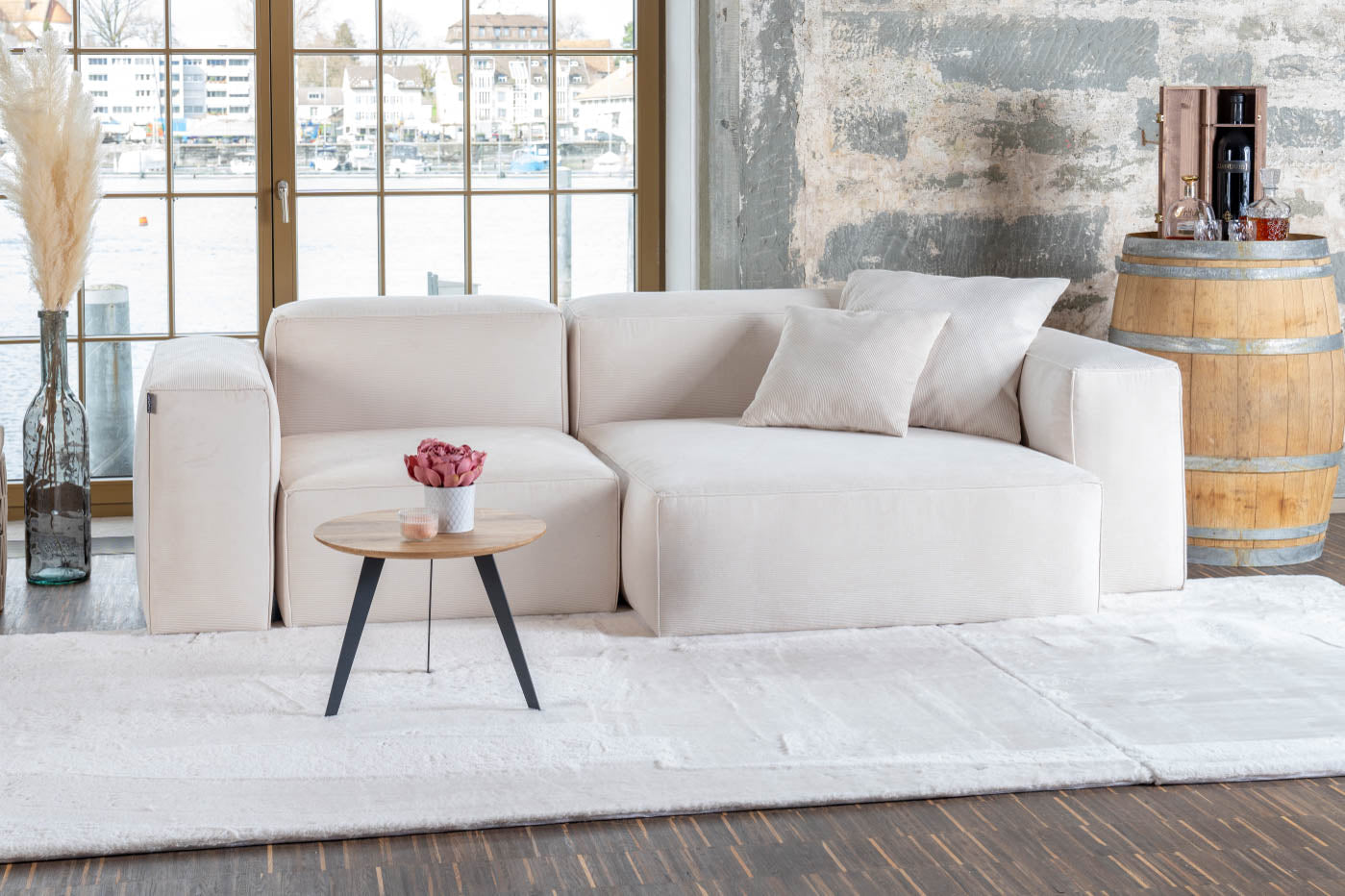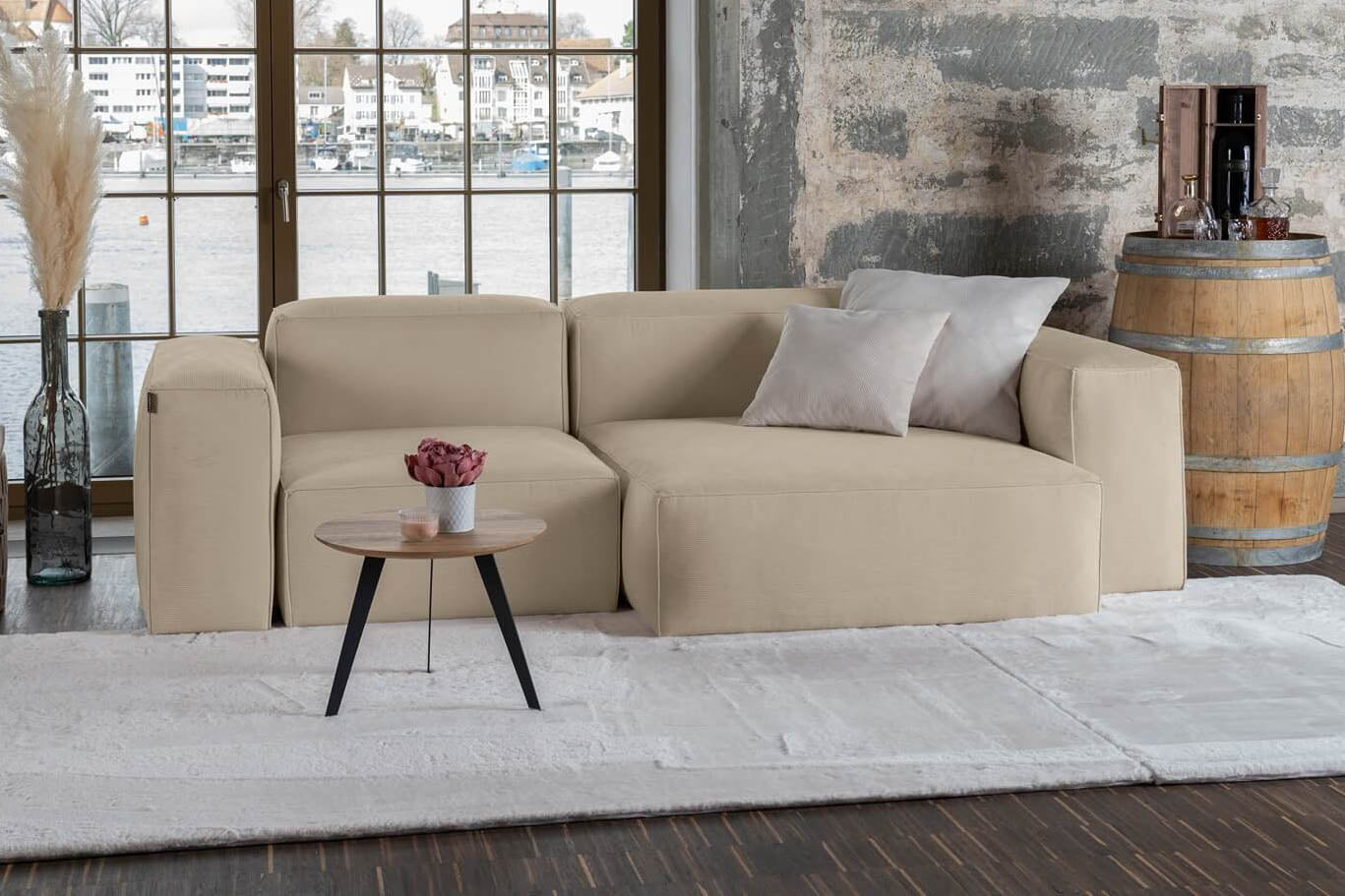The living room is the heart of every home. It's where we relax, entertain guests, and spend time with our family. But how can we make our living room even more comfortable and inviting? One way is by incorporating houseplants. In this article, we present the 10 best plants for the living room and offer tips on choosing and caring for them.
Why plants in the living room are important
Plants are not only aesthetically pleasing, they also offer numerous health benefits. Indoor plants can improve the air quality by filtering pollutants and producing oxygen. They create a natural and calming atmosphere that can reduce stress. Furthermore, plants can act as natural humidifiers, making the indoor climate more pleasant.
Plants in the living room can do more than just look good. They can also have a positive effect on our health. A 2019 study showed that the presence of plants indoors can increase concentration and productivity. The researchers found that participants who worked with plants in a room showed better cognitive performance than those who worked without plants in a room.
Health benefits of houseplants
Houseplants have been shown to have positive effects on our health. They can reduce allergens and pollutants in the air, thus preventing allergies and respiratory illnesses. They also improve concentration and productivity. Studies have shown that the presence of plants in a room can lead to improved cognitive performance.
Another health benefit of houseplants is their ability to increase humidity. Dry room air can lead to dry skin, irritated eyes, and respiratory problems. By adding plants to your living room, you can create a more pleasant indoor environment and prevent these problems.
Improving room air quality through plants
Residential furnishings can improve the air quality by removing pollutants like formaldehyde and benzene from the air. These pollutants can be released from furniture, paints, or cleaning products and can cause long-term health problems. Therefore, it's crucial to buy furniture or sofas made of sustainable and tested materials . Adding plants to your living room can improve air quality and create a healthier indoor environment.
Besides filtering pollutants, houseplants also produce oxygen. During photosynthesis, plants absorb carbon dioxide and release oxygen. This can help improve indoor air quality and boost your overall well-being.
There are many different types of houseplants you can place in your living room. Some popular options include the green lily, the rubber tree, and the bow. These plants are not only beautiful to look at but also easy to care for, making them suitable for beginners. Furthermore, the fern and the rubber tree have a cooling effect in the summer. You can find more tips for a cool living room here .
To get the most out of your houseplants, water and fertilize them regularly. Make sure they get enough light, but avoid direct sunlight, as this can burn the leaves. With proper care, houseplants can thrive in your living room for years and offer a variety of health benefits.
Discover our sustainable reach:
Selecting the right plants for your living room
When choosing plants for your living room, there are a few factors to consider.
A green living room creates a pleasant atmosphere and gives your home a natural touch. Plants are not only decorative but also improve air quality by producing oxygen and filtering pollutants. Choosing the right plants for your living room can be a challenge, however.
Consideration of light and temperature
Most houseplants need bright, indirect light to thrive. If your living room isn't particularly sunny, choose plants that can tolerate low light. Many plants thrive in shade, such as Zamioculcas or Archa Hanf. However, make sure these plants also need some light to stay healthy.
Besides light, temperature also plays an important role in choosing the right plants. Some plants prefer warmer conditions, while others prefer colder climates. If your living room is quite cool, cacti or succulents might be the right choice for you. They are adapted to dry and warm environments and don't require much water.
Selection according to maintenance effort
The care required for a houseplant varies depending on the type. If you have limited time to care for your plants, choose robust plants that can survive with minimal care. An example is the lily of the valley, which thrives in less-than-ideal conditions and only needs occasional watering.
If you enjoy spending time with your plants and caring for them, you can also choose more demanding plants that require your attention. Orchids, for example, are beautiful plants, but they do require special care. They need regular watering and fertilization, and they prefer high humidity.
Another important factor in choosing the right plants for your living room is the available space. Consider the space you have available for your plants and choose plants that fit into that space. It's also important to consider
Top 10 plants for your living room
Succulents: easy-care beauties
Succulents are the perfect choice if you're looking for easy-to-use plants. They only require a little water and can handle varying light conditions. Succulents come in various shapes and colors, adding variety to your living room.
Did you know that succulents conserve water in their leaves? This allows them to survive in dry environments where other plants would struggle. Some succulent species even have thorny leaves to protect themselves from predators.
The variety of succulents is impressive. There are smaller varieties perfect for windowsills, and larger ones that can serve as eye-catching centerpieces on a table or dresser. No matter which succulent you choose, you'll add a touch of beauty and elegance to your living room.

Ficus: a classic for the living room
The Ficus is a popular houseplant found in many living rooms. It's robust, purifies the air, and requires little light. The Ficus can become a real eye-catcher in your living room while also improving the air quality.
There are several types of ficus plants, including Ficus benjamina, Ficus elastica, and Ficus lyrata. Each of these varieties has its own unique characteristics and can give your living room a special ambiance.
For example, Ficus Benjamina has delicate green leaves that bring a touch of freshness to the room. Ficus elastica, also known as the rubber tree, has glossy, dark green leaves that create an elegant look. Ficus lyrata, also known as the fiddlehead, has large, brightly shaped leaves that add a dramatic accent.
Orchids: exotic elegance
Orchids are known for their exotic beauty and elegance. They bloom in a variety of colors and can transform your living room into a tropical oasis. Orchids require a little more attention, but the effort is worth it for your breathtaking blossoms.
There are thousands of orchid species worldwide, many of which are native to tropical regions. Each species has its own specific requirements for light, temperature, and humidity. When choosing orchids, it's important to understand the needs of the plant you've chosen to ensure they thrive in your living room.
Orchids are also known for their long blooming period. Some varieties can bloom for several months, while others only a few weeks. Whichever orchid variety you choose, you'll give your living room an exotic touch and become a focal point for your guests.

Monstera: the trendsetter among houseplants
The monstera is a houseplant that's currently very popular. Its large, decorative leaves contribute to a trendy look in your living room. The monstera needs bright, indirect light, and regular watering.
The characteristic holes in the monstera's leaves make it a unique houseplant. These holes, also called windows, allow the leaves to gain more light and also give them an interesting structure. The monstera is a climbing plant that can grow up a moss pole or a wall.
The Monstera is also known as the "Swiss cheese plant" because its leaves resemble Swiss cheese. With its trendy look and attractive design, the Monstera is the perfect choice to add a modern touch to your living room.

Philodendron: The Easy-Care Climbing Plant
Philodendrons are climbing plants that are well-suited for living rooms. They require little light and can grow on shelves or walls. Philodendrons are easy to care for and can even surprise beginners who are new to incorporating plants into their home.
There are many different types of philodendron, each with its own unique characteristics. Some philodendron species have heart-shaped leaves, while others have elongated or lobed leaves. The color of the leaves also varies, from deep green to bright yellow.
Philodendrons are also known for their air-purifying properties. They can filter pollutants from the air and thus improve the air quality in your living room. With their easy care and attractive appearance, philodendrons are a great choice for anyone looking for a climbing plant to enhance their living room.
SANSEVIERIA: The indestructible desert plant
The Sansevieria, also known as a bow or mother-in-law's tongue, is an extremely hardy plant. It can survive with little light and water, making it perfect for a living room that doesn't receive much natural light. The Sansevieria has long, upright leaves and is a good choice for bringing greenery into your living room.
The Sansevieria is a succulent and stores water in its leaves, which helps it survive dry spells. This plant is also known for its air-purifying properties. It can filter pollutants like formaldehyde and benzene from the air, thus improving the air quality in your living room.
There are several varieties of Sansevieria, some with striped or spotted leaves. Thanks to its robust nature and attractive appearance, it's a great choice for anyone looking for an easy-care plant to add a natural touch to their living room.

Aloe Vera: the medicinal plant for the living room
Aloe vera is not only a beautiful houseplant but also a medicinal plant. The gel from its leaves has anti-inflammatory and soothing properties and can be used for skin lesions or sunburn. It needs bright light, but direct sunlight should be avoided.
As a succulent, Aloe Vera stores water in its fleshy leaves, which helps it survive in dry environments. It has long, pointed leaves and can grow to an impressive size.
To extract the gel from the leaves, simply cut a sheet and squeeze out the gel. This can then be applied directly to the skin to benefit from its healing properties. With its dual function as a houseplant and medicinal plant, Aloe Vera is a wonderful addition to any living room.

Efeutute: the ideal hanging plant
Ivy is a popular hanging plant for the living room. It has long tendrils that can grow in hanging baskets or on shelves. It needs bright, indirect light and regular watering and is perfect for filling empty corners or high shelves in the living room.
Ivy is a robust plant that thrives in a variety of environments. It's also known for its air-purifying properties, capable of filtering pollutants from the air. It has heart-shaped leaves available in various shades of green.
Efeututes are also easy to propagate. You can take cuttings from the plant and let them take root in water or soil. This way, you can propagate your Efeutute and receive other plants for your living room or to give away.
Care tips for your living room plants
The living room is a popular place to keep houseplants. They not only create a pleasant atmosphere but also improve air quality. To keep your living room plants healthy and beautiful, it's important to take good care of them. Here are some tips to help:
Irrigation and fertilization
Most houseplants need regular watering to survive. However, it's important to consider the right time and amount of water. Regularly check the soil's moisture by inserting your finger about an inch deep. When the topsoil is dry, it's time to water your plants. Avoid drowning them, however, as this can lead to root rot.
Besides irrigation, fertilization is also important to provide your plants with the necessary nutrients. Use a balanced fertilizer that contains all the essential nutrients. The frequency of fertilization depends on the type of plant and the season. In general, you should fertilize your houseplants every two weeks during the growth phase. In winter, when plant growth slows, you can reduce fertilization to once a month.
Repot and cut
Houseplants grow over time and therefore occasionally need a larger pot to make room for their root growth. Monitor your plants' growth and check the roots regularly. If you notice the roots filling the existing space and protruding from the pot, it's time to overturn the plant. Choose a pot that's at least 2-3 cm larger than the old one and use fresh potting soil.
Besides repotting, regularly pruning your houseplants is important to promote growth and health. Remove dead leaves or stems to make room for new growth. Also, prune excessively long shoots to promote bushy and compact growth. Always use a clean, sharp tool to avoid injuring the plant.
By following these care tips, you can ensure your living room plants stay healthy and beautiful. Don't forget to check your plants regularly and keep an eye out for any pests or diseases. With a little attention and care, your houseplants will become a real eye-catcher in your living room.
Common houseplant problems and solutions
Pest and diseases
Sometimes your houseplants can be affected by pests such as aphids, spider mites, or mosquitoes. Check your plants regularly for signs of infestation and take action to get rid of the pests. Diseases such as mold or mildew can be caused by excessive watering. Therefore, ensure that the floor is not too damp.
It's important to regularly inspect your houseplants and pay attention to potential pests. Aphids are small insects that feed on plant sap and weaken leaves. Spider mites are tiny, arachnid-like creatures that weave fine threads and suck on plant leaves. Fungus gnats are small flies that lay their eggs in the soil and whose larvae can eat the roots of plants.
To get rid of pests, you can use several methods. One option is using insecticides specifically formulated for houseplants. These may be available in spray or granular form. Another option is to use natural pesticides such as neem oil or a mixture of water and detergent. These can be sprayed on the plants to kill the pests.
To prevent diseases such as mold or mildew, it's important to water your houseplants correctly. Make sure the soil doesn't get too moist, as excess water can promote mold growth. It's also advisable to air the plants regularly to reduce humidity and reduce the risk of mold.
Solutions for yellow leaves and growth problems
Yellow leaves can be a sign of excessive watering or a lack of nutrients. Reduce watering and check the soil's nutrient content. If your plants aren't growing well or their leaves are withering, you may be getting too much or too little light. Adjust the position of your plants to meet their optimal light requirements.
It's important that houseplants receive sufficient light to thrive. Most houseplants prefer bright, indirect light from a window or door. If your plants don't receive enough light, their leaves may turn yellow and their growth may be compromised. In this case, you can use an artificial light source, such as a plant lamp, to meet your plants' light requirements.
Another possible reason for yellow leaves and growth problems could be a lack of nutrients. Houseplants need certain nutrients, such as nitrogen, phosphorus, and potassium, to thrive. Check the soil's nutrient content and supplement with a suitable fertilizer if needed. However, be careful not to overdo the fertilizer, as this can lead to overfertilization.
With the right plants and proper care, you can transform your living room into a green oasis. Choose plants that suit your personal taste and give your living room the desired ambiance. I enjoy looking at your plants and further developing your green thumb skills!
There's a wide variety of houseplants to choose from. Some popular houseplants include the green lily, characterized by its long, green leaves, and the rubber tree, with its large, glossy leaves. The Zamioculcas is another popular houseplant that requires little light and water, making it ideal for beginners.
It's important to regularly maintain your houseplants to ensure they stay healthy. This includes watering regularly, removing dead leaves, and rearranging them when they outgrow their current pot. Also, make sure your houseplants aren't near drafts or radiators, as this can lead to drought.
Maintaining houseplants can also be a relaxing and stress-relieving activity. Watching your plants grow and attending to their needs can give you a sense of fulfillment. It can also help improve the air quality in your living room, as plants absorb carbon dioxide and provide oxygen.


